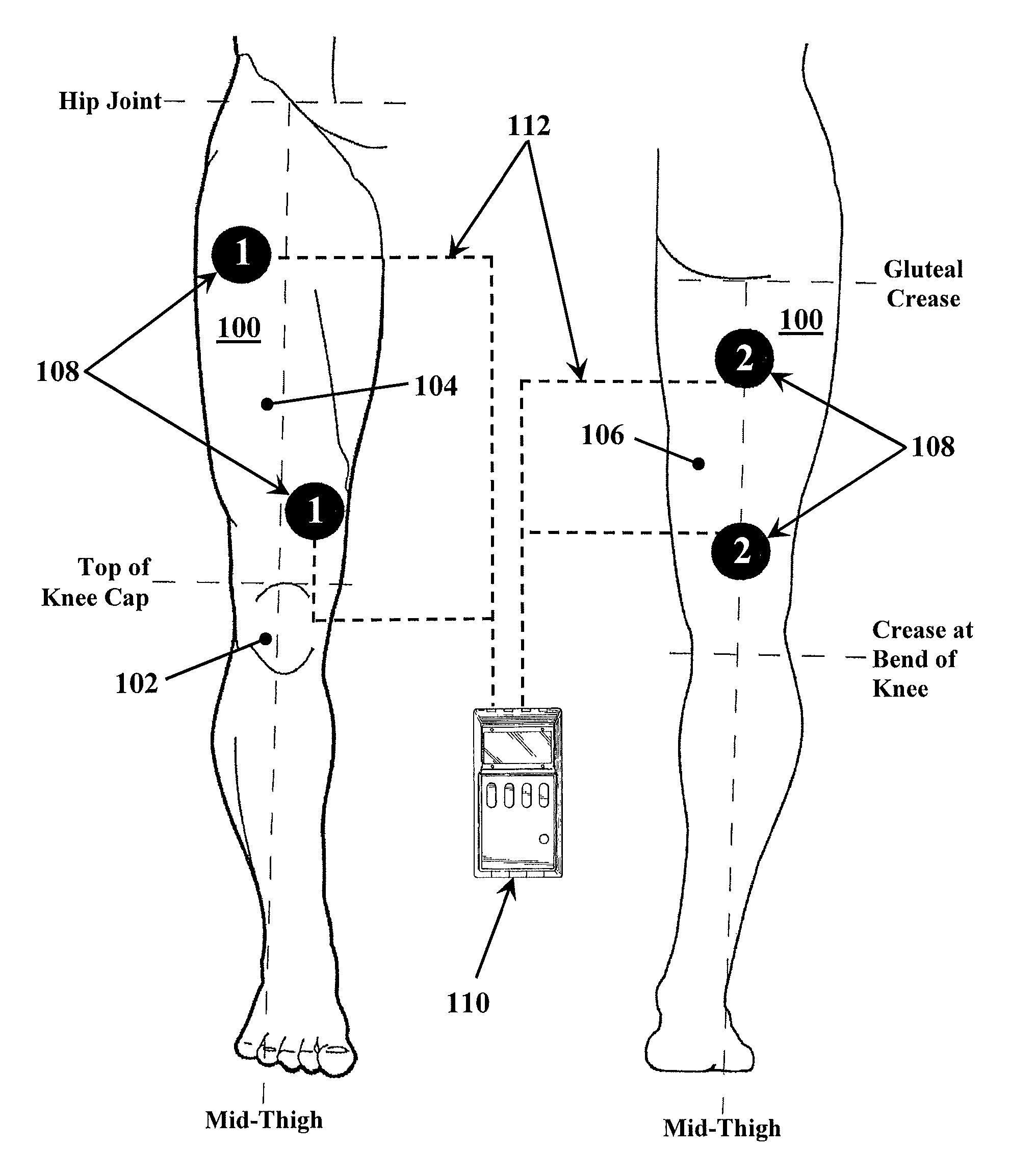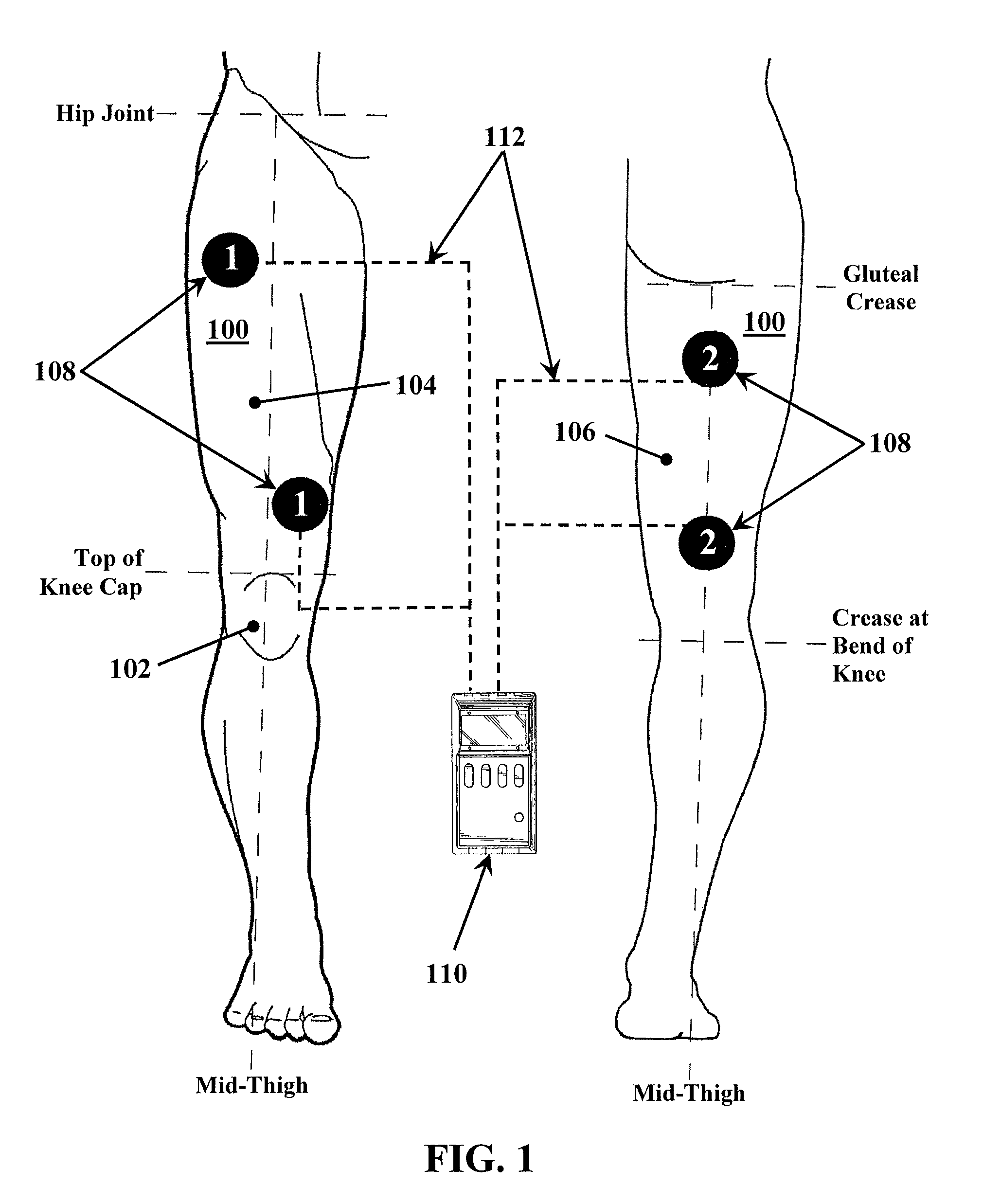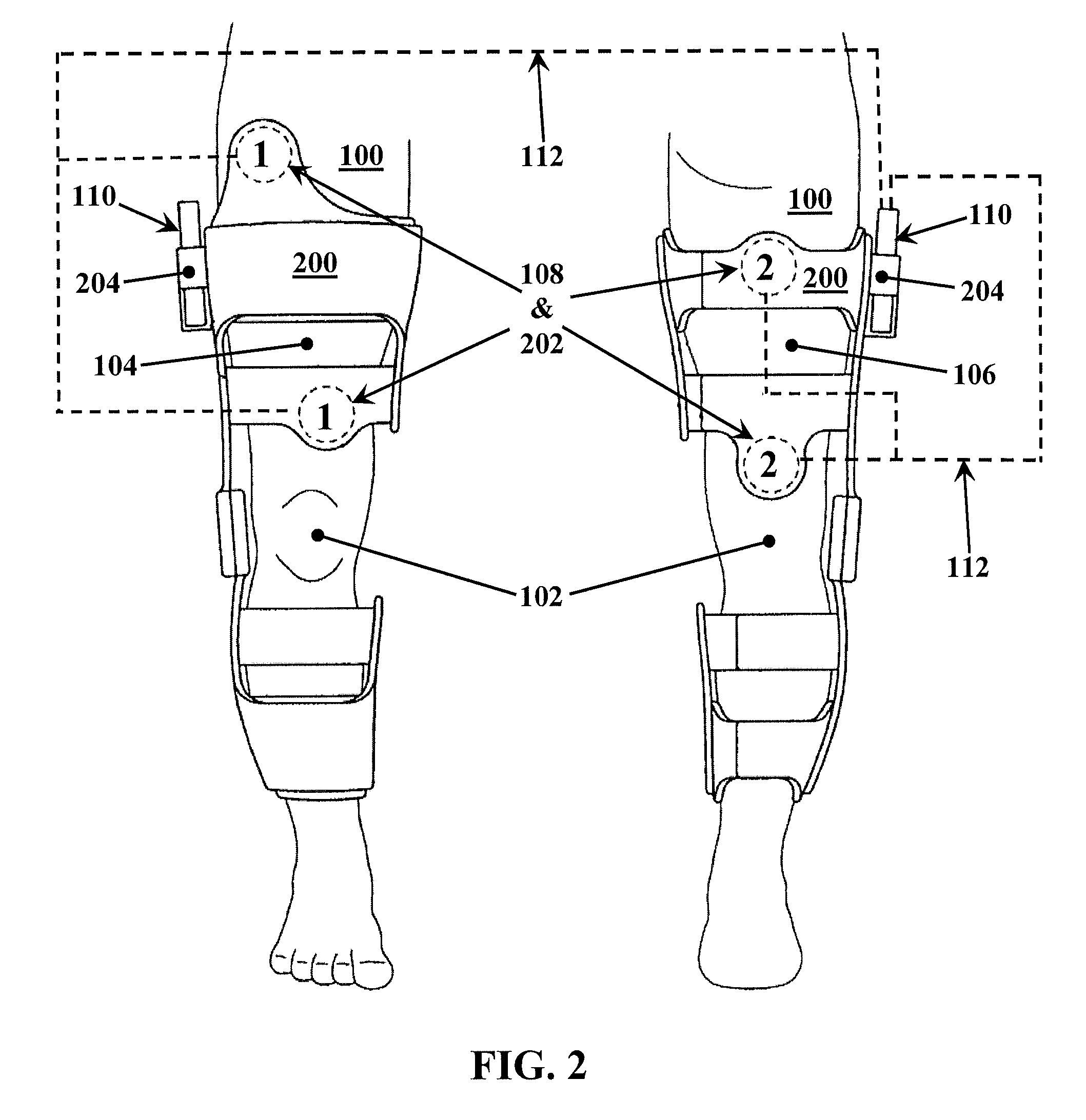Apparatus and method for stabilizing, improving mobility, and controlling cartilage matrix degradation of weight-bearing articular joints
a weight-bearing articular joint and apparatus technology, applied in electrotherapy, medical science, therapy, etc., can solve the problems of muscle failure, limited success in movement recovery, and rapid fatigue, so as to improve mobility, reduce compressive force, and control the degradation of cartilage matrix
- Summary
- Abstract
- Description
- Claims
- Application Information
AI Technical Summary
Benefits of technology
Problems solved by technology
Method used
Image
Examples
example 1
i. Example 1
Comparing the Benefits of Patterned Muscle Stimulation to TENS in the Treatment of Osteoarthritis of the Knee
[0053]Degenerative joint disease and osteoarthritis are progressive disease processes that affect articular joints, including but not limited to, the hips, knees, ankles, toes, back, neck, and shoulders. Typically, the weight-bearing joints, such as the hips, knees and ankles are most affected by osteoarthritis. The most common type of arthritis is osteoarthritis of the knee. More than 10 million Americans suffer from osteoarthritis of the knee, with most of those affected being older than 45 years of age. Pathologic changes in degenerative joint disease and osteoarthritis involve the progressive breakdown of the articular cartilage matrix.
[0054]A total of 116 patients who qualified for inclusion in this investigation were enrolled in one of five medical centers in the United States. The patients were randomly placed into “test” and “sham-control” stimulation grou...
example 2
ii. Example 2
The Effect of Sequential Electrical Stimulation on Osteoarthritis
[0067]An animal model was used for quantitative analyses of the components of synovial fluid that affect cartilage matrix degradation.
[0068]In an investigation on adult hound dogs, subjects were selected from dogs housed at Washington State University and under the care of personnel from the Comparative Orthopedic Research Laboratory (CORL). Each dog had a cartilage defect made previously and had established osteoarthritis in one of two stifle joints. Based on this criteria, a total of 11 adult hound dogs (six female and five male) were enrolled in the study.
[0069]The selected subjects, each being identified with a unique six-letter alphabetical identification tag, were randomly placed into “test” and “control” stimulation groups of five each, with one dog serving as the spare to replace a dog that might develop complications from surgery. Veterinary technicians placed the electrodes on both groups and app...
PUM
 Login to View More
Login to View More Abstract
Description
Claims
Application Information
 Login to View More
Login to View More - R&D
- Intellectual Property
- Life Sciences
- Materials
- Tech Scout
- Unparalleled Data Quality
- Higher Quality Content
- 60% Fewer Hallucinations
Browse by: Latest US Patents, China's latest patents, Technical Efficacy Thesaurus, Application Domain, Technology Topic, Popular Technical Reports.
© 2025 PatSnap. All rights reserved.Legal|Privacy policy|Modern Slavery Act Transparency Statement|Sitemap|About US| Contact US: help@patsnap.com



